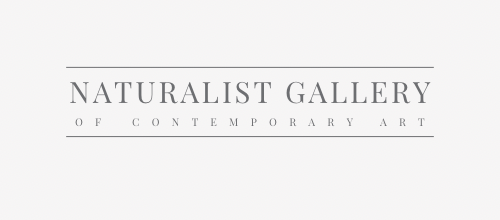Abstract art has become an integral part of contemporary art, dominating exhibitions, art auctions, and fairs worldwide.
Abstract art is a non-representational form of artistic expression. It uses lines, shapes, colors, and gestures to convey emotions and ideas, free from the constraints of realistic depiction. It's a visual language that communicates through abstraction.
Be sure to visit our collection of abstract artwork at Naturalist Gallery.
With Friends, Henri Ekman
In this guide, we will delve into the world of abstract art, exploring its history, evolution, and characteristics. Whether you are an art enthusiast or interested in buying abstract art, this article will provide valuable insights into this dynamic and expressive art form.
-
What is Abstract Art? Abstract art is a form of artistic expression that does not aim to depict an accurate representation of visual reality. Instead, it communicates through the use of lines, shapes, colors, forms, and gestural marks. Artists employ a variety of techniques, blending traditional methods with experimental ideas, to create abstract artworks that prioritize instinct and the unconscious.
Komposition V, Wassily Kandinsky
-
The Origins of Abstract Art: The birth of abstract art has been a subject of debate among art historians. While Wassily Kandinsky is widely credited as the pioneer of abstract art, Swedish painter Hilma af Klint is believed to have preceded him, creating her first abstract painting in 1906. Kandinsky's famous abstract painting, "Komposition V," created in 1911, propelled abstract art into the public eye. Despite Kandinsky's success during his lifetime, af Klint's visionary works remained largely unrecognized until years after her death in 1944.
Group 1, Primordial Chaos, No. 16, Hilma af Klint
III. Evolution of Abstract Painting: Since its origin in the early 1900s, abstract art has evolved as artists experimented with different styles and approaches. Artists like Piet Mondrain explored geometric elements, while Jackson Pollock pioneered the technique of pouring or splashing paint onto a canvas. Cy Twombly embraced surrealist automatism, allowing his unconscious mind to guide his expressive marks. Contemporary abstract artists continue to push the boundaries of the art form, incorporating surface, depth, color, and texture to evoke emotional responses and engage viewers.
Untitled, Cy Twombly
-
Abstract Expressionism: Abstract expressionism emerged as a significant movement within abstract art in the 1940s, centered in New York City. Influenced by surrealism, abstract expressionism achieved international recognition with artists such as Jackson Pollock, Mark Rothko, and Willem de Kooning. Known for its energy, intensity, and freedom of expression, abstract expressionism captured the spirit of the time. Today, contemporary artists like Matthew Dibble carry the legacy of abstract expressionism, infusing their work with a sense of structure and emotional depth.
H. R. Rocket, Matthew Dibble
-
Abstract Photography: Abstract photography involves capturing images that replicate the aesthetic and techniques of abstract art. Photographers employ various techniques, such as extreme close-ups, exaggerated shadows, and overexposure, to create abstract images consistent with the principles of abstract art. Barbara Crane and Kimberly Poppe are renowned photographers who explore abstract photography, transforming everyday objects and scenes into visually captivating compositions.
Chicago Loop, Barbara Crane
-
The Characteristics of Abstract Art: Abstract art is characterized by its non-representational nature, departing from accurate depictions of reality. It encompasses a range of styles, from total abstraction with geometric elements to partial abstraction within figurative art. Abstract artists use color, memory, and visual sensation to convey subjective interpretations of reality. The art form is often associated with virtues like order, purity, simplicity, and spirituality.
Composition with Large Red Plane, Yellow, Black, Red, and Blue, Piet Mondrain
Explore our curated selection of contemporary artists from around the globe, including abstract expressionist Henri Ekman.
Naturalist Gallery offers artist representation internationally. Apply your art.
Abstract art has played a vital role in shaping the artistic landscape of the 20th and 21st centuries. From its early pioneers to the contemporary abstract artists of today, the movement continues to evolve, adapt, and inspire. By transcending the limitations of realistic representation, abstract art offers a unique visual language that communicates emotion, spirituality, and individual interpretation. Whether you appreciate abstract art or seek to explore it further, this guide has provided a comprehensive understanding of its history, evolution, and characteristics.
...Whose Name Was Writ in Water, Willem de Kooning
How to Sell Art Online and Make Money
A Guide to Collage: Techniques, History, and Tips
Open Calls: Maximizing Art Opportunities
Types of Art Exhibitions: A Comprehensive Guide
Mastering the Art of Naming: Strategies for Creating Art Titles
Art Prints vs. Original Paintings: A Guide for Artists and Art Buyers

